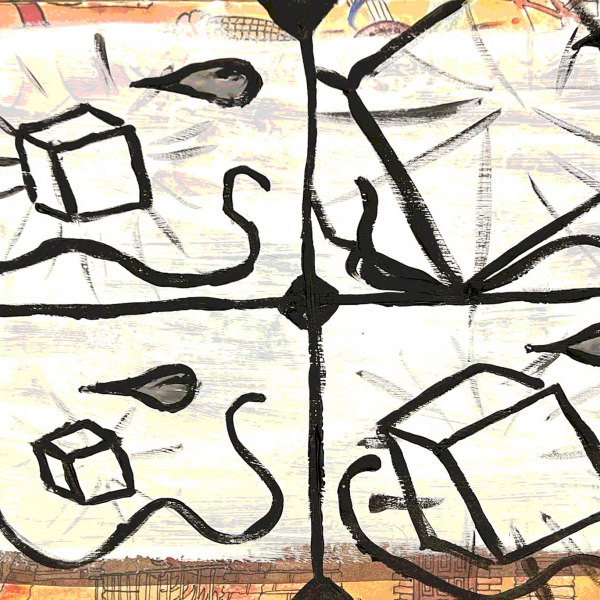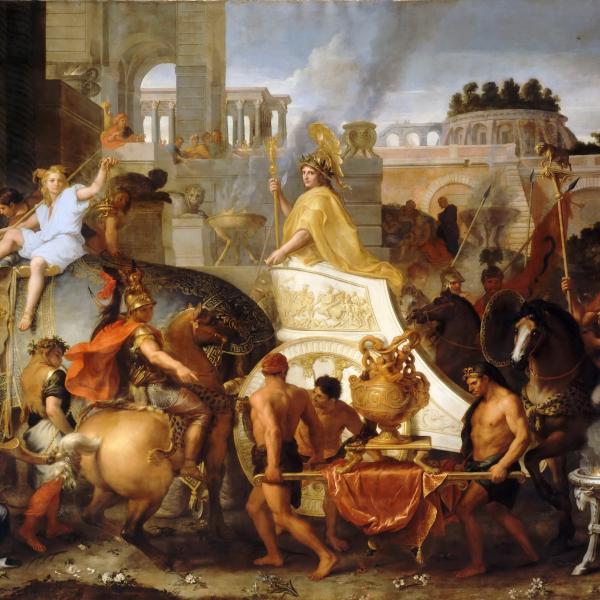Jessica Thea
Merle Kling Undergraduate Fellow, Class of 2017
I arrived in Bosnia and Herzegovina in the second week of April along with 25 of my classmates. We all soaked up the sun and the 70 degree weather; four months in Copenhagen had made us winter weary. I traveled with my Humanitarian Law and Armed conflict class. We were all students interested in law, especially in human rights abuses and wartime. Bosnia was no stranger to either.
I had learned briefly in high school about the war that raged through the former Yugoslavia in the ’90s but hadn’t thought about it in years. To me, a war in the Balkans that took place 20 years ago was no longer relevant. When I stepped out of my cab in front of my hotel, however, I realized just how wrong I was.
Honestly, I went into Bosnia and Herzegovina (BiH) with no expectations; I simply didn’t know anything about the country or its culture. I barely could conceptualize the state’s location on a map. In all of my international relations studies, I had never discussed the Balkans. I was as removed from the city of Sarajevo, the state’s capital, as any naïve tourist could be.
Immediately, though, its beauty overwhelmed me. The airport was situated between two mountains, each dotted with red-roofed houses and lush trees. As our small plane descended into this landscape, we all took in the green that we hadn’t seen in the big cities many of us had visited up until that point. As much as I loved London, Dublin and Stockholm, I missed the nature that those places seemed to lack.
Only when we started driving through the streets of Sarajevo did I start to feel the effects of the war that occurred two decades ago. Although the landscape of BiH was breathtaking — between the mountains and forests flowed incredible rivers that reflected the bluest of skies — a sense of ominousness washed over us. Driving through the city was like driving through a history book. Buildings were riddled with bullet holes, bombed and broken foundations of homes stood without walls, rubble piled in the streets. The juxtaposition between the landscape and the infrastructure was stark and confusing. The country had such potential, and yet everyday its people had to be reminded of the atrocities of the war as soon as they stepped out of their houses each morning.
My classmates and I were all stunned by the devastation that was still so apparent. It had us questioning how far the state has come in its post-conflict reconstruction efforts. If the most obvious and surface-level wounds of the war have not yet been fixed, what has?
 To answer this question, we met with one of the founders of the Post-Conflict Research Center (PCRC), a nongovernmental organization dedicated to cultivating an environment for sustainable peace in BiH. The PCRC uses multimedia projects that foster tolerance, moral courage, mutual understanding and positive change. In other words, the organization uses different media to encourage peace throughout the state. One of the most influential projects they worked on was a collaboration with Angelina Jolie, writer, director and star of the film In the Land of Blood and Honey.
To answer this question, we met with one of the founders of the Post-Conflict Research Center (PCRC), a nongovernmental organization dedicated to cultivating an environment for sustainable peace in BiH. The PCRC uses multimedia projects that foster tolerance, moral courage, mutual understanding and positive change. In other words, the organization uses different media to encourage peace throughout the state. One of the most influential projects they worked on was a collaboration with Angelina Jolie, writer, director and star of the film In the Land of Blood and Honey.
After hearing that the film accurately depicts the war, my classmates and I decided that we had to watch it that first night in Sarajevo. The success of the film in depicting the war was not exaggerated. The movie portrays the budding relationship of a Serbian army officer named Danijel (Goran Kostic) and a Muslim artist named Ajla (Zana Marjanovic) and the tension that arises out of a multiethnic relationship during the war. The movie explores the times of peace before the war — when Croats, Serbs and Muslim Bosniaks lived together in harmony — and the destruction of that harmony at the first gunshot that marked the start of war.
The main theme of the film is the issue of blame. It is the Serbian army that has blood on its hands. Jolie highlights the genocidal massacres committed by the Serbs against the Muslims, as well as the systematic raping of Muslim women by Serbian army men. The movie is painful, but it is important for understanding the tensions of the war.
The purpose of the film is also to humanize the ideas of ethnic tension. On a macro level, there is still much racism and segregation in Bosnia today. Neighborhoods are separated by ethnicity, schools by religion. In the Land of Blood and Honey shows that we can’t group together these huge ethnic groups, “othering” them. We have to realize that Bosniaks and Serbs alike are human, and even in the heart of the war people from different groups can come together and love. There is still much work to be done in Bosnia, and I can’t wait to see the progress that lies ahead.




